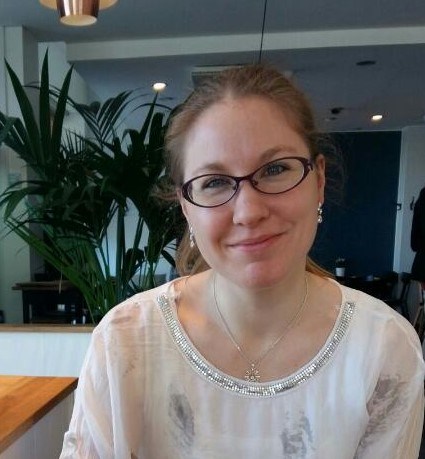Northern Manitoba residents will have two opportunities next week to let researchers know what they think the north’s infrastructure needs are.
The researchers are from the University of Calgary School of Public Policy and they are seeking public input on the idea of a Canadian northern corridor — basically connected pieces of physical and virtual infrastructure developed with an underlying plan in place, rather than created as one-off projects somewhat divorced from the broader context.
“We are studying the idea or the concept of a northern corridor, which basically refers to a pre-approved, multimodal right of way,” says Katharina Koch, a postdoctoral research associate at the University of Calgary. “Pre-approved means that it is a route that has the regulatory approval for development of potential future infrastructure projects. And multi-modal means that the corridor does not discriminate against any type of infrastructure. We could be, for example, talking about a roadway or a railway, broadband, electricity transmission lines, pipelines, any type of infrastructure that may be relevant for a community. We are not project proponents. We are interested in studying the concept of a northern corridor, and its visibility, desirability and acceptability.”
The idea of a research corridor isn’t new.
“This is not the first time that such a corridor has been spoken about,” Koch said. “In the Canadian context there was this quite famous idea of a mid-Canada corridor in the 1960s.”
What is new, though, is the effort researchers involved in this project are making to connect the idea of a corridor to the lived realities of people who live and work in the north.
“What we are really hoping is to learn from the community residents, anybody who is interested in talking with us to help us better understand what are actually the region’s priorities in terms of infrastructure, what are challenges they have been experiencing, but also where they see opportunities for their communities,” Koch says. “Our aim is really to listen to the residents and that they actually inform our research.”
In effect, the northern corridor researchers are trying to act as the virtual bridge between northern residents and regional, provincial and federal policy makers as well as private sector interests who actually decide on and execute large-scale infrastructure developments.
Coming to Northern Manitoba is a big deal for the researchers, for a couple of reasons.
“Churchill is very interesting from an infrastructure perspective, due to the presence of the port and the railway, but we also see the challenges, especially when we talk about climate change,” Koch said. “All of these different dynamics, they are extremely relevant for our research.”
Although Thompson and Churchill aren’t the first northern Canadian communities to provide their feedback on the corridor concept, they will be the first engagement sessions that are in-person, rather than virtual.
“We can’t wait to finally go into the community and talk to people and to hear from them,” Koch says. “It will be the first time that we are doing this in person so that is really exciting.”
Although the vast majority of Canada’s landmass is essentially considered “the North,” the development of he country and the distribution of its population, which is heavily concentrated along the southern border with the United States, means that transportation corridors are often north-south, while northern communities in neighbouring provinces may not be connected by direct routes that don’t involve circuitous detours.
“If you look, for example, at the railway between Winnipeg and Churchill, again a north-south connection, but you don’t necessarily even have connections between, for example, the territories,” says Koch. “Because previously, infrastructure development in northern Canada, it has been on a one-off basis, but it’s not necessarily connected. You have maybe a lot of individual projects but you don’t necessarily have a connection across the entire north or between north and south and within the north.”
When the northern corridor research program completes its final report in 2025, a document will exist to help guide decisions abut what infrastructure to put where and how doing so might affect or strengthen regional cooperation.
“Corridors, they are emerging as a critical discussion point to bring, for example, governments and different stakeholders, public stakeholders, private stakeholders together,” Koch says. “We will create a report, which will be public, bout the potential feasibility of a northern corridor. We hope this report will inform, for example, policymaking across the provinces and territories, perhaps also the federal government. We haven’t had such really comprehensive research yet that looks at all these different communities across Canada’s north, tries to seek their input, and really puts everything together.”
The community engagement sessions, which are free, will include a presentation by the researchers and be facilitated by Cascade, an Indigenous-owned consulting firm.
“They will lead the discussion by inviting the participants to basically discuss and talk about a few key issues, for example, what does connectivity mean to them? Where do they see major kind of challenges in terms of infrastructure? Where do they see opportunities? And also, how would they envision infrastructure development kind of within the next 10 years, if a northern corridor were ever to be realized in the future?”
The Thompson session will be April 25 from 6 p.m. to 9 p.m. at the Ma-Mow-We-Tak Friendship Centre while the Churchill event will run from 4 p.m. to 7 p.m. on April 29 at the Churchill Town Centre Complex.
“We will share a back-to-community report within 60 to 90 days after the engagement session so residents can then look at the report,” Koch says. “It is basically a what-have-we-heard report and they can also provide feedback again.”
More information is available on the Canadian Northern Corridor Research Program website and the Canadian Northern Corridor community engagement page.




